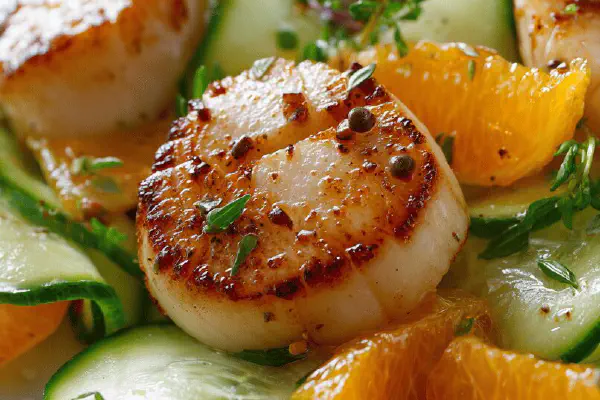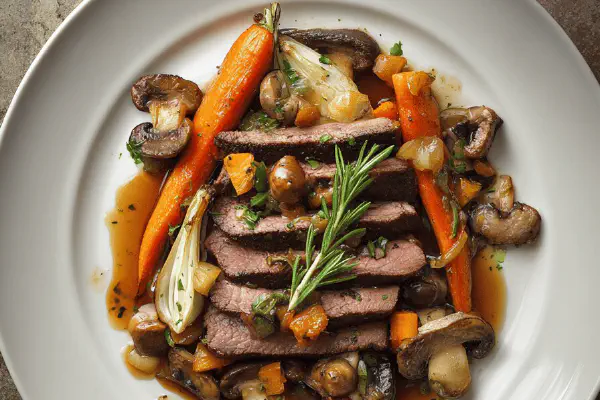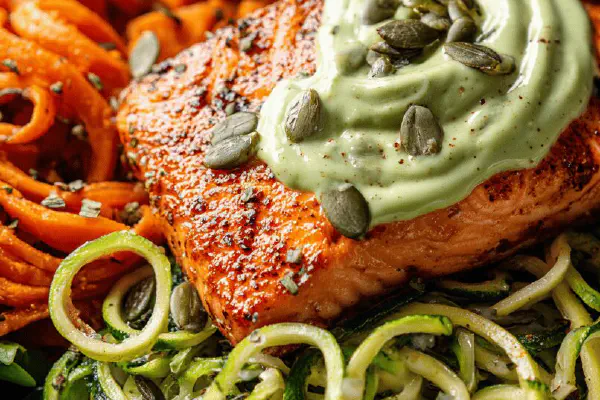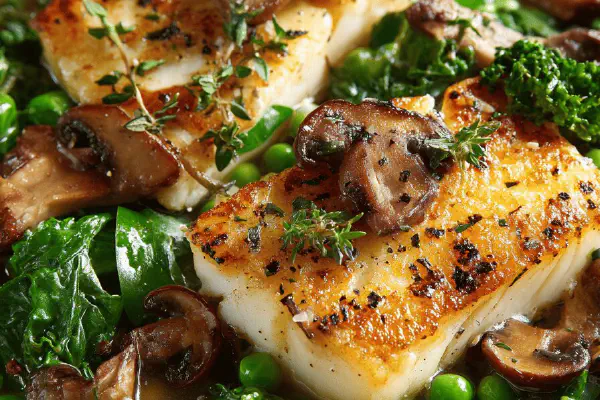Spiced Roasted Fish and Carrot Purée
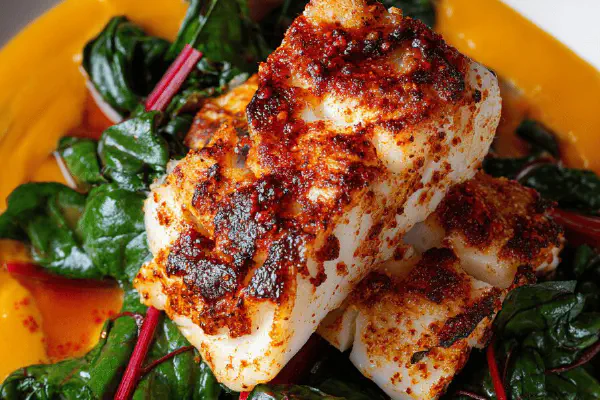
By Emma
Certified Culinary Professional
Ingredients
Carrot Purée
- 420 g carrots sliced into rounds
- 1 celery stalk finely chopped
- 1 French shallot minced
- 2 garlic cloves minced
- 320 ml chicken stock or vegetable broth
- 25 ml unsalted butter
Fish
- 14 ml smoked paprika
- 16 ml garlic powder
- 4 ml brown sugar
- 6 ml celery salt
- 1 pinch ground cayenne pepper
- 670 g firm white fish fillets (cod, walleye), cut into 4 portions
- 230 g Swiss chard leaves, blanched for 3 minutes in salted boiling water
- Salt and freshly ground pepper
- 10 ml grapeseed oil (optional replacement for butter)
About the ingredients
Method
Carrot Purée
- 1 Bring carrots, celery, shallot, garlic, and stock to a simmer in medium saucepan. Let bubble gently 18-23 minutes until carrots pierce easily with a fork.
- 2 Puree vegetables and butter with immersion blender or food processor until silky smooth. Season carefully with salt and pepper, taste for balance. Keep warm—lid on, low heat or double boiler setup avoids drying and crusting.
Fish
- 3 Combine smoked paprika, garlic powder, brown sugar, celery salt, and cayenne in shallow bowl. Press spice mix firmly onto fish portions, coating tops evenly.
- 4 Heat non-stick skillet over medium-high. Add butter or grapeseed oil—watch for the faint nutty smell or foaming to signal right temp.
- 5 Place fish spice-side down first, no crowding; cook about 3-4 minutes till crust forms and edges start opaque. Flip gently with thin spatula. Cook 2-3 minutes more but no more—fish should flake with slight resistance, moist inside.
- 6 Season lightly with salt and pepper after cooking; don’t overseason before—spice mix has salt content. Rest fish briefly off heat; carryover cooks gently while you plate.
Assembly
- 7 Spoon carrot purée centrally on warm plates. Fan Swiss chard leaves alongside; they soften with residual heat but keep a slight bite.
- 8 Arrange fish atop or next to greens; spoon any buttery pan juices if desired.
- 9 Serve immediately. Fish texture delicate; purée velvety but with body. The lightly peppery greens cut richness.
- 10 Leftovers? Purée reheats gently with splash broth or cream substitute. Fish reheats quickly but tends to dry—refresh on low heat with lid, add a pat of butter or oil.
Cooking tips
Chef's notes
- 💡 Simmer veggies gently—not roaring boil—to keep layers intact. Carrots tender enough to pierce with fork but hold shape slightly. Avoid mushy purée; blend stages, check texture often. Butter or grapeseed oil folds into purée last, not during cooking. Keep heat low while holding purée in pot, lid on to avoid skin or drying, double boiler if slow.
- 💡 Spice rub pressed firmly onto fish or flakes come off mid-cook. Use brown sugar sparingly; caramelizes fast if pan too hot, blacks too quick. Smoked paprika gives color and subtle heat; mix with garlic powder and celery salt for complex pop. Cayenne optional but watch it—tiny pinch can sneak in fire but not burn floors. Season fish after, salt in rub already.
- 💡 Fish pan temp needs careful watch. Butter browning is cue; don’t wait for smoke. Nuts smell, slight foaming mark ready surface. Place fish spice-side down, don’t crowd, edges start turning opaque halfway up fish side signals flip time. Flip once only; thin spatula helps keep crust and shape intact. Cook short time after flipping, feel flesh resistance—not floppy or dry.
- 💡 Swiss chard: quick blanch 3 mins only. Over-blanched leaves lose color, texture—too soft, no bite, tastes flat. Fan leaves on plate next to purée quickly to keep some snap. If you want brightness, drizzle lemon zest or olive oil but keep minimal. Greens balance sweetness and heat; too soft means losing dimension on plate.
- 💡 Rest fish briefly off heat. Carryover cooks inside, firming just right without drying out. Purée can sit warm longer, but check moisture; add splash broth or non-dairy cream substitute when reheating. Reheat fish carefully on low, lid on, or add small fat pat for moistness. Timing is all—too long means dryness, too soon underdone texture.
Common questions
Can I swap out fish types?
Firm fleshed fish best—cod, haddock, pollock work well. Softer fish fall apart, rub won’t hold. Check thickness too; thin pieces cook fast, burn spice crust easily. Adjust timing.
What if purée is grainy or chunky?
Blend longer in stages. Use immersion blender in bursts. Overmixing breaks structure but you want silky not gluey. Add butter or oil last off heat for silkiness, adjust salt finally. Texture critical for mouthfeel here.
How to fix burnt spice crust?
Heat too high usually. Lower pan temp after butter foams. Flip earlier if bottom darkens too fast. Press rub firm but thin. Can add little oil to pan to moderate heat contact but don’t crowd fish.
How to store leftovers?
Carrot purée in airtight container fridge up to 3 days. Fish best eaten day of but if fridge use, wrap tightly, reheat low with bit oil or butter to stop dryness. Greens can lose texture fast; store separately or toss cold quickly.
